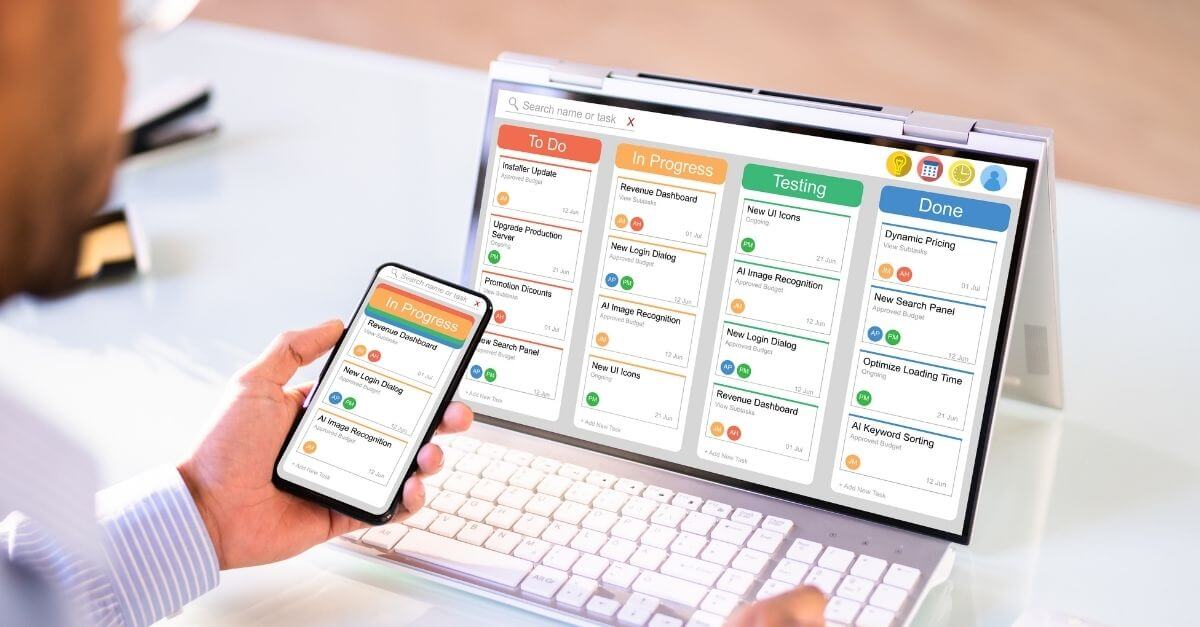OKR methodology: What it is and how to implement it in our company – Part 1

This article is part of a series of three articles dedicated to OKRs, given that it is a fairly specific topic and that for a few years it has been used more and more assiduously in the business world we have chosen to separate it so that its understanding is more effective. So let’s start at the beginning.
OKRs vs KPIs. What are they?
OKRs represent a powerful and flexible tool to define corporate objectives and at the same time measure their progress across all the areas involved.
As Andy Grove, one of the historic founders of Intel, quoted, “There are people who work too hard to get too little.” Or, in other words, they dedicate efforts to wrong objectives or are not properly focused. The key here is to be clear, first of all, the goal to achieve. As an organization, as a team or individually. And, secondly, and equally important, is to know if all the effort made is focused on achieving the planned objectives, and not others.
Even in companies that have KPIs and mechanisms to measure performance and results, without a correct alignment they will not be of much use. Let’s take an example:
We want to go from Barcelona to Madrid by car. We know that the journey is 600 km, the speed of the car and the capacity of the tank, which is full and the costs of gasoline. We go out and we look at the speed during the journey, the gasoline that remains, the consumption etc. and all the indicators are in order and we see that we will arrive in 4h, 3h, 2h, 1h … and it is when we should see the outskirts of Madrid that we read that we are at the height of Clermont-Ferrand, halfway to Paris.
What went wrong? Neither the KPIs nor the indicators noticed anything strange because they mediate speed, time, consumption… And we were within the right parameters. The indicators were fine, but the objective was still to be established, with the goal to be achieved, which was to go to Madrid and not to Paris.
If all the indicators were positive… Why have we failed? Perhaps these indicators were not aligned with the objective, or the objectives were different by department. This does not happen with the OKR methodology.
This is when we want to talk about OKRs, which in English stand for “objectives and key results”.
A bit of history of OKRs
Although we have been hearing about OKRs for a few years, they are not a recent concept. Here’s a bit of their chronology:
- It was back in 1971 when the aforementioned Andy Grove first developed OKRs as an objective management tool, based on his principle that “it does not matter what you know, but what matters is the value you bring with execution”. If you want to see an explanation for himself, here is the video.
- In 1999 John Doerr, who had been a colleague and apprentice of Grove, introduced goal management through OKRs at Google. It was from this moment that OKRs really take center stage.
- Years later, in 2017, John Doerr would publish his Best-Seller ‘Measure what matters’ where he exposes the success stories of OKRs and their application.
Implementation of OKRs
OKRs follow a simple but flexible pattern, allowing us to adapt to any situation. A goal is first set and then several key results are detailed for each objective.
Objectives
- It’s the WHAT.
- Answer the question Where do I want to go?
Resultados clave / Key Results
- It’s the HOW
- There are usually several per OKR
- Answer the question How do I know I’m heading in the right direction?
The fulfillment of the various key results produces the achievement of the objective.
Field of application of OKRs
OKRs can be used at different levels within the company: for the entire organization, for a department, for a team and even for a single person.
OKR Examples
Below, we show you a couple of OKRs of different levels:
OKR related to business activity:
| Objective: To improve the company’s website for this quarter. |
| KR1 |
| Visual redesign and layout of the website. |
| KR2 |
| Increased loading speed by 20%. |
| KR3 |
| Reach 1 million monthly visitors. |
| KR4 |
| Increase the average visit time by 20%. |
Personal OKR:
| Goal: Run 10 km in less than 50 minutes by June. |
| KR1 |
| Go for a run 3 times a week for at least 30 minutes. |
| KR2 |
| Increase the race distance by 1 kilometer each week. |
| KR3 |
| Decrease the time per kilometer by 5 seconds each week. |
Tips for the time of application
- It is recommended to have a minimum and a maximum of key results for each objective.
- Lack of key results can result in missed targets once these key outcomes are completed.
- Too many key results may show that the objective is not precise enough and/or that the objective could be separated into two or more objectives.
In the following article, we can see how to track the defined OKRs as well as the actions required for compliance.
Do you want more information? Check out our services and let us advise you on everything related to an effective Agile transformation. Or if you wish, we can offer you an Agile consultancy at no cost to help you in the transformation of your company.




